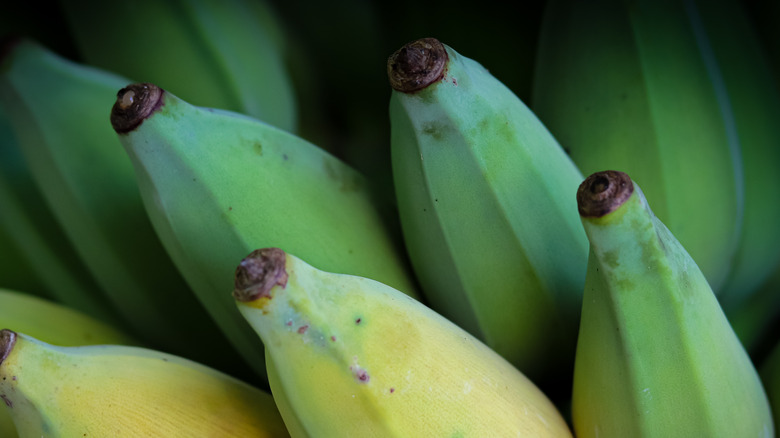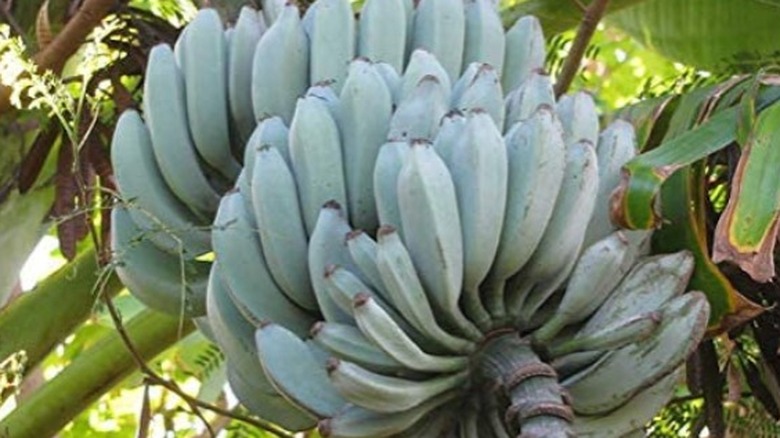Does The Blue Java Banana Actually Exist?
We may receive a commission on purchases made from links.
While scrolling social media, some people believe that they have discovered the quintessential blue fruit. The blue java banana looks almost like a candy colored confection based on some photos. Although these visuals are quite enticing, Snopes peeled back the layers on what is actually the real story on this beautiful looking fruit. The outlet found that while the narrative out there is mostly true, there's much more to it.
First, the blue java banana is an actual banana type. According to Miami Fruit, it's being grown by the company, but it is not a vibrant blue color like many social media posts tend to depict. The company describes the banana as follows, "When it's unripe, sometimes the outer peel has a blue-ish green hue. As it ripens, the outer peel will turn fully yellow." In addition, California Rare Fruit Growers describe the banana as having a "bluish cast to the unripe fruit." Although social media posts tend to depict a cotton candy colored blue banana in all its glory, it appears that someone added in some expert photo editing. In the end, the blue java banana does exist in real life, but the color might be a mirage in the real world.
Why is the blue java banana called the ice cream banana?
While the alleged vibrant hue of the blue java banana captivated people's attention, more people are intrigued by the reference of being the ice cream banana. According to House Beautiful, the label comes from the "creamy texture and flavor that's oddly reminiscent of vanilla custard or soft serve." Although Ben & Jerry's has not captured this idea in a pint, yet, the texture and food reference could entice some people to eat more bananas. Maybe that fluffy, creamy banana could curb that craving for another bowl of Chunky Monkey.
In some ways, this idea of a fruit tasting like other foods is not uncommon. Some fruit companies have cultivated varieties for that specific characteristic. From cotton candy grapes to the various versions of the grapple, these twists on classic flavors make it fun to eat fruit. If a special color, flavor, or texture encourages people to eat fruit over candy, isn't that a win for healthy eating?

